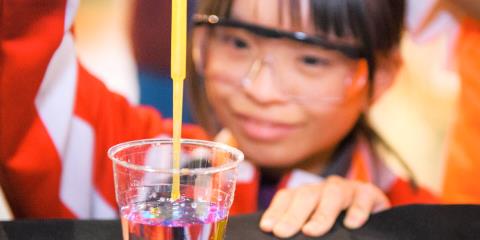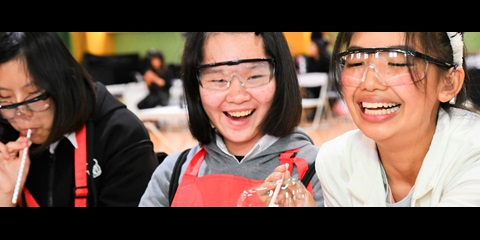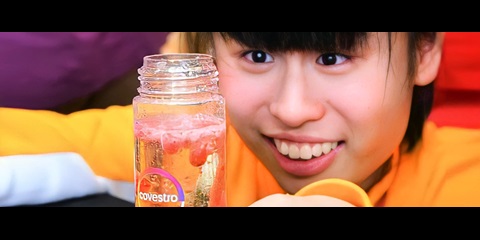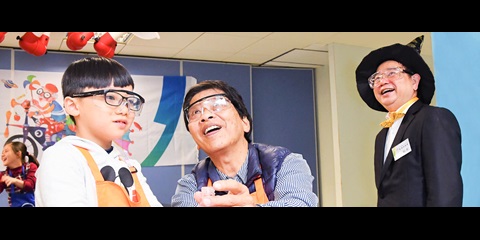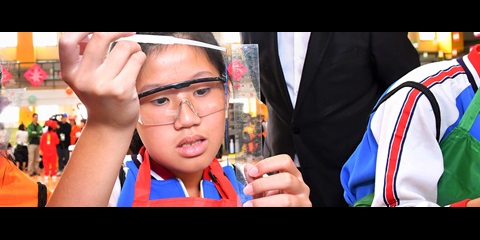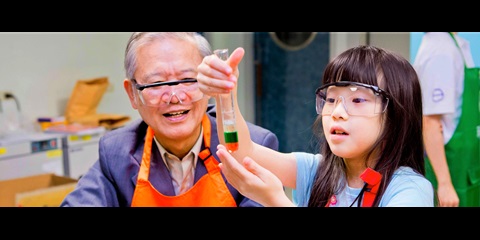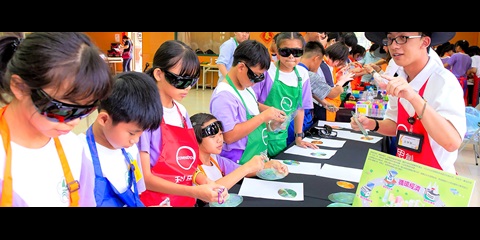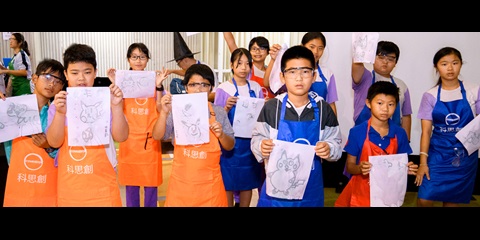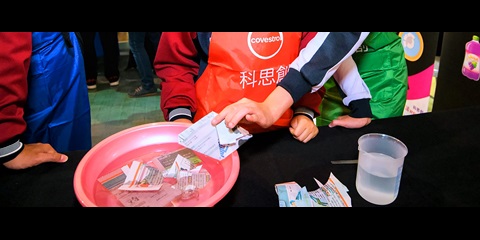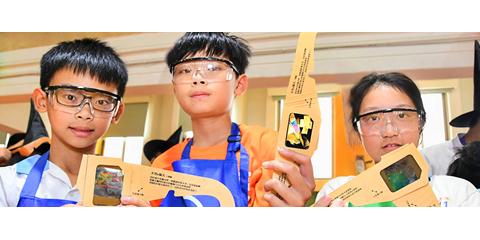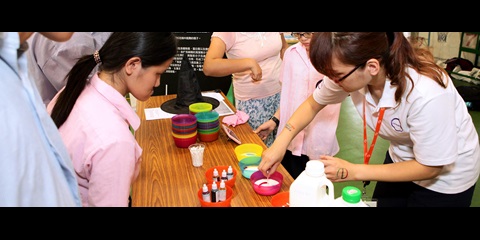
The Mystery of Nanocarbon
We will need:
- Paper cup
- Beaker
- Dropper
- Candle
- PET bottle cap
- Metal spoon
Step-by-step instructions:
- Fill the paper cup with water up to 1 cm in height or half cup.
- Place the paper cup on the candle flame to be broiled. Since the paper cup is filled with water, its bottom will not get burned. However, its protruding part from the edge may catch fire. Therefore, do not let the flame reach the edge of the paper cup.
- While broiling the paper cup, move it around to uniformly cover its bottom with tiny black carbon particles. In general, the process only takes 1~2 minutes to complete. However, please note that the bottom of the paper cup must be placed in the candle flame, not above the flame. By doing so, tiny carbon particles of incomplete combustion will easily attach to the bottom of the paper cup.
- Place the paper cup on the desk in an upside-down position.
- Use the dropper and take a small amount of water. Put a drop of water on the bottom of the paper cup. Shake the cup gently and observe the movement of the droplet. You will discover that the water droplet will not adhere to the paper cup. Instead, the droplet is in a round shape and is rolling around freely.
- Next, put a few more drops of water on the bottom of the paper cup. Again, the water droplets will roll around freely.
How it works:
The natural nanoscale ciliary structure on the surface of a lotus leaf has hydrophobic ability that prevents water drops from sticking, which lets them easily roll and bounce. At the same time, the water droplets will carry away the dust on the leaves. Scientists call this phenomenon the “Lotus Effect”. The paper cup in the experiment absorbs a layer of tiny black carbon particles (their size can be measured ona nanoscale) after being broiled on the candle flame, granting it the hydrophobicity seen in the lotus effect. As a result, the water droplets naturally cannot adhere to the paper cup!
A spoon with carbon particles of nanoscale structure attached to it is hydrophobic. When such a spoon is inserted into water, light from the surroundings will be absorbed by the black carbons particles while also shining on the spoon. However, when light beams have larger incident angles “total reflection” occurs, which means that there is no refraction. The light beams reflect to the water surface and then enter the air by refraction. Therefore, light can be seen above the water surface and the spoon appears to be shining!
Something extra:
- Fill the beaker with half a cup of water.
- Use a metal spoon and burn the back of the metal spoon with a candle flame until it turns black.
- Wait for a few minutes until the metal spoon cools down. Insert the metal spoon into the water and observe the spoon right above the water surface.
- You will discover that the black metal spoon looks as though it is shining, as if it had been changed back to the original one!
*Resource come from: NTCU Science Game Lab.








